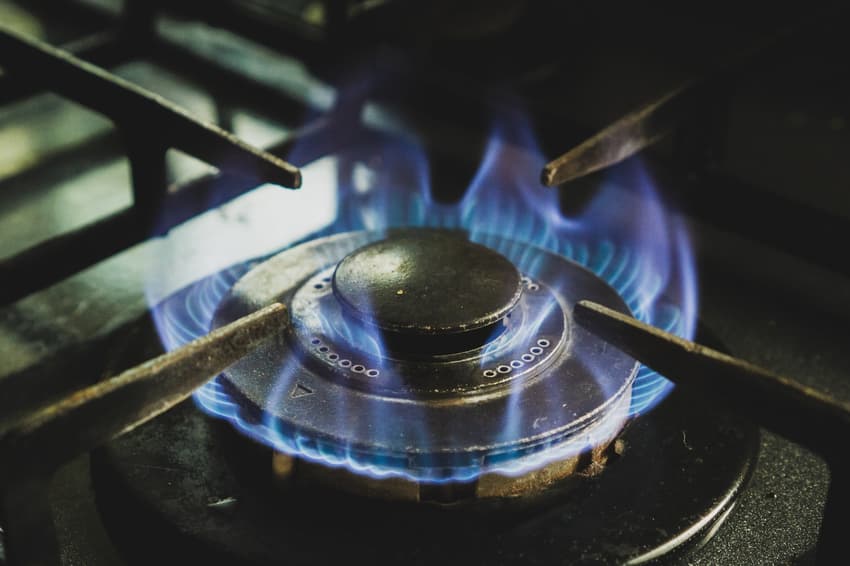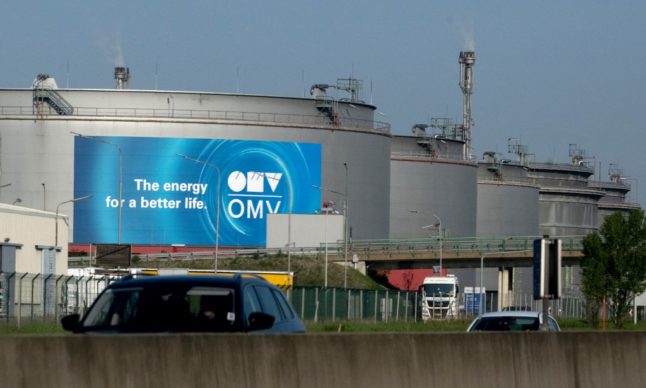ENERGY: How Austria has drastically reduced imports of Russian gas

Austria is no longer heavily dependent on Russian gas. How has this happened and how will it impact Austria’s gas supplies this winter? Here’s what you need to know.
Austria’s gas supply looks very different today compared to earlier this year when Russia invaded Ukraine.
Back in February, Austria sourced around 80 percent of all gas from Russia, with 10 percent coming from Norway, five percent from Germany and the remainder from other sources.
This put Austria in a delicate position as the EU began placing sanctions on Russia and experts voiced fears about Russia turning off the gas supply to Europe. This also took place at a time when Austria’s gas reserve tanks were only around 12 percent full.
READ MORE: Can British people in Austria claim the winter fuel payment from the UK?
However, as the first snowfall now covers more parts of the country, E-Control (the government regulator for electricity and gas markets) has confirmed that Austria reduced imports of Russian gas to 21 percent in September.
The country’s gas tanks are also well stocked at just over 95 percent following a mild autumn. Although around a third of the gas belongs to neighbouring countries.
So how did this happen and where is Austria getting gas from now? The Local took a closer look to find out.
How did Austria reduce imports of Russian gas?
The biggest change to how Austria sources natural gas was by booking line capacity on pipelines that flow from Germany and Italy, reported Die Presse.
The gas now flowing to Austria is mostly coming from Norway or is liquefied natural gas (LNG).
At a recent press conference in Vienna, Johannes Schmidt from the Institute for Sustainable Economic Development, said: “Actually, it's incredible what Europe and Austria in particular have achieved here over the summer.”
Austria’s partially state-owned OMV has also booked 40 terawatt hours (TWh) of gas transport capacity from Norway and non-Russian LNG suppliers for the period from October 2022 to September 2023. This gas is delivered to a tank in Oberkappel, Upper Austria, via Germany.
FOR MEMBERS: What are the rules about turning on the heating in the workplace in Austria?
Additionally, Austria has confirmed LNG shipments from Dubai, which further helps to boost the country’s energy security.

Picture taken on May 3, 2022 shows a general view of the largest Austrian refinery OMV at Schwechat near Vienna, Austria. (Photo by JOE KLAMAR / AFP)
A statement released from the Federal Chancellery said: "The United Arab Emirates are a strategic partner of Austria and will make a contribution to the security of supply with LNG deliveries next winter, as agreed between OMV and the Emirati ADNOC.
"Furthermore, the Austrian and Emirati governments will intensify cooperation on energy issues and climate protection."
However, purchasing gas from new sources hasn't been the only tactic to reduce Austria's dependency on Russian gas.
In July, Austria and Germany finalised a solidarity agreement to secure gas flows between the two countries in the event of an energy crisis. And in September, the Austrian Federal Government launched the “Mission 11” campaign to encourage consumers to save energy.
Finally, there are long-term plans to expand renewable energy infrastructure across Austria to reduce the overall dependency on natural gas. But the results of this part of the plan will not be seen until the coming years.
READ MORE: How expensive are gas and electricity in Austria right now?
Is Austria’s gas supply now secure?
Experts are positive about Austria’s ability to get through the coming winter without running out of gas.
However, they are now concerned about winter 2023/2024 with plans already being hashed out about how to secure gas supplies next spring and summer to fill up the tanks again.
The procurement of gas has also come at a big cost to Austria with the government spending €3.95 billion alone on securing the recently implemented strategic gas reserve of 20 percent of overall consumption, reports ORF.
And with energy prices set to skyrocket again for the next storage season, it’s likely the Austrian government will have to dig deep into the financial reserves once more in the spring.
Comments
See Also
Austria’s gas supply looks very different today compared to earlier this year when Russia invaded Ukraine.
Back in February, Austria sourced around 80 percent of all gas from Russia, with 10 percent coming from Norway, five percent from Germany and the remainder from other sources.
This put Austria in a delicate position as the EU began placing sanctions on Russia and experts voiced fears about Russia turning off the gas supply to Europe. This also took place at a time when Austria’s gas reserve tanks were only around 12 percent full.
READ MORE: Can British people in Austria claim the winter fuel payment from the UK?
However, as the first snowfall now covers more parts of the country, E-Control (the government regulator for electricity and gas markets) has confirmed that Austria reduced imports of Russian gas to 21 percent in September.
The country’s gas tanks are also well stocked at just over 95 percent following a mild autumn. Although around a third of the gas belongs to neighbouring countries.
So how did this happen and where is Austria getting gas from now? The Local took a closer look to find out.
How did Austria reduce imports of Russian gas?
The biggest change to how Austria sources natural gas was by booking line capacity on pipelines that flow from Germany and Italy, reported Die Presse.
The gas now flowing to Austria is mostly coming from Norway or is liquefied natural gas (LNG).
At a recent press conference in Vienna, Johannes Schmidt from the Institute for Sustainable Economic Development, said: “Actually, it's incredible what Europe and Austria in particular have achieved here over the summer.”
Austria’s partially state-owned OMV has also booked 40 terawatt hours (TWh) of gas transport capacity from Norway and non-Russian LNG suppliers for the period from October 2022 to September 2023. This gas is delivered to a tank in Oberkappel, Upper Austria, via Germany.
FOR MEMBERS: What are the rules about turning on the heating in the workplace in Austria?
Additionally, Austria has confirmed LNG shipments from Dubai, which further helps to boost the country’s energy security.

A statement released from the Federal Chancellery said: "The United Arab Emirates are a strategic partner of Austria and will make a contribution to the security of supply with LNG deliveries next winter, as agreed between OMV and the Emirati ADNOC.
"Furthermore, the Austrian and Emirati governments will intensify cooperation on energy issues and climate protection."
However, purchasing gas from new sources hasn't been the only tactic to reduce Austria's dependency on Russian gas.
In July, Austria and Germany finalised a solidarity agreement to secure gas flows between the two countries in the event of an energy crisis. And in September, the Austrian Federal Government launched the “Mission 11” campaign to encourage consumers to save energy.
Finally, there are long-term plans to expand renewable energy infrastructure across Austria to reduce the overall dependency on natural gas. But the results of this part of the plan will not be seen until the coming years.
READ MORE: How expensive are gas and electricity in Austria right now?
Is Austria’s gas supply now secure?
Experts are positive about Austria’s ability to get through the coming winter without running out of gas.
However, they are now concerned about winter 2023/2024 with plans already being hashed out about how to secure gas supplies next spring and summer to fill up the tanks again.
The procurement of gas has also come at a big cost to Austria with the government spending €3.95 billion alone on securing the recently implemented strategic gas reserve of 20 percent of overall consumption, reports ORF.
And with energy prices set to skyrocket again for the next storage season, it’s likely the Austrian government will have to dig deep into the financial reserves once more in the spring.
Join the conversation in our comments section below. Share your own views and experience and if you have a question or suggestion for our journalists then email us at [email protected].
Please keep comments civil, constructive and on topic – and make sure to read our terms of use before getting involved.
Please log in here to leave a comment.